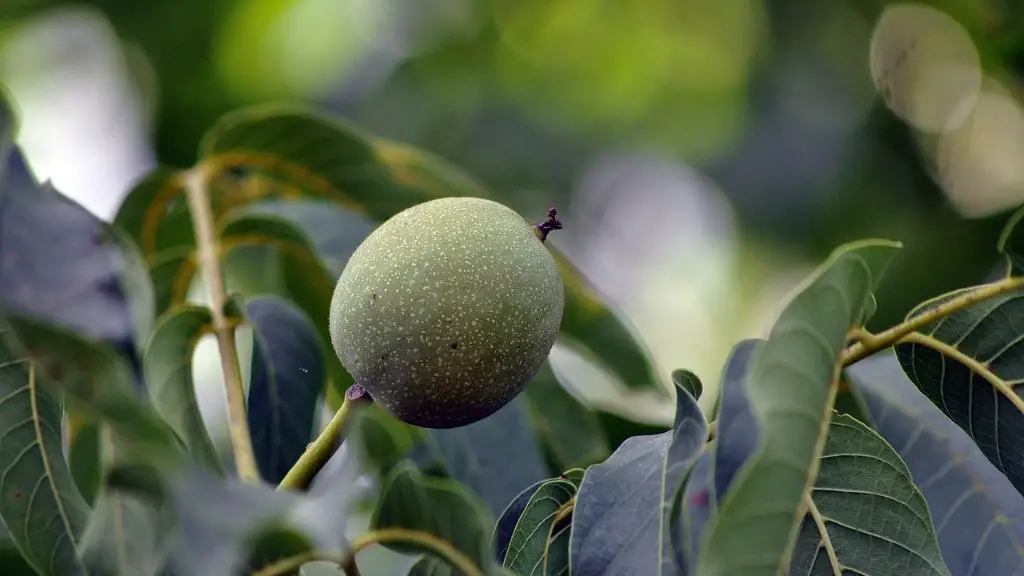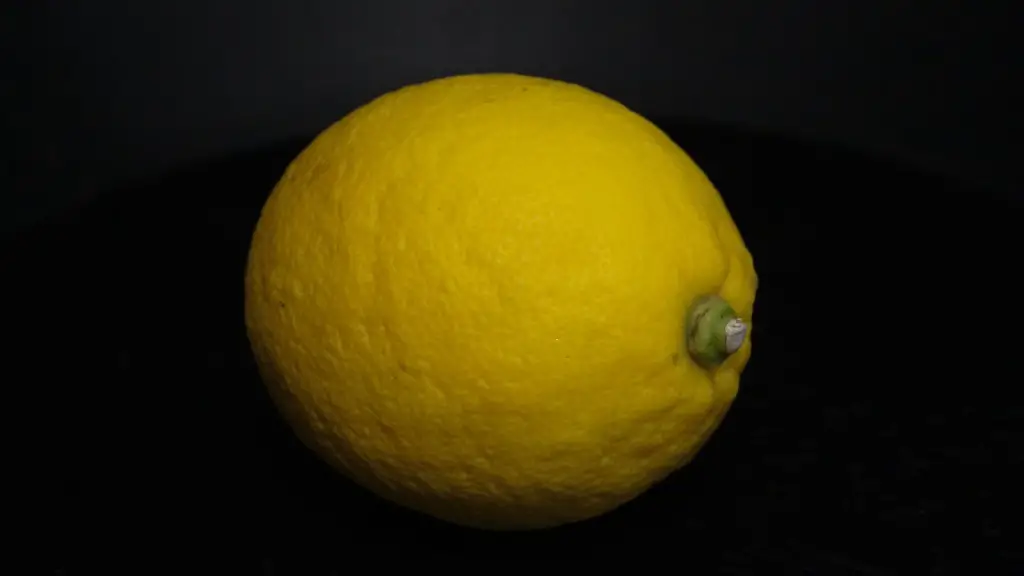Organic Methods for Killing Black Aphids on Cherry Trees
Cherry trees can quickly become overrun by black aphids if left unchecked. Not only are they unsightly and pose a potential health risk to the tree, they can also stunt the trees’ growth and ruin your harvest. Fortunately, there are a few simple control methods you can employ to help deal with the problem.
Organic products provide a much safer alternative to chemical pesticides, and can be just as effective. Neem oil is an effective insecticide derived from the neem tree and is the least toxic option available. It works by disrupting the breeding and feeding habits of the aphids and can help reduce infestations. To use, simply mix ¾ of a teaspoon of neem oil with one quart of warm water, then pour it into a spray bottle. Spray it liberally on the affected areas and repeat as necessary.
In addition to neem oil, there are also many home remedies that can help. One of the safest and least expensive options is to create a garlic and onion spray. Blend one large onion, 3 cloves of garlic, and one quart of water in a blender. Strain the liquid and add one teaspoon of liquid dish soap, then pour it into a spray bottle. Spray it on all of the affected leaves and stems, making sure to get underneath them as well. This can be done twice a week for effective control of aphid populations.
A good way to prevent the problem from reoccurring is to use companion planting. Planting certain flowers and herbs in the same area as the cherry tree can help to keep the aphids away. Dried or fresh basil, marigold, and lavender are all great options. Their strong odors will help to repel aphids and other insects, creating a natural barrier and reducing the chance of them coming back.
Finally, in addition to these methods, proper hygiene and maintenance of your cherry tree is essential. Be sure to check the tree regularly, prune dead branches and leaves, and clean up around the tree. All of these steps will help to keep the problem at bay and your tree healthy.
Installation of Yellow Traps
Installing yellow traps near the cherry tree can be an effective way of controlling black aphid populations. The yellow colour of the traps attracts the aphids and traps them in a sticky coating, which then prevents them from reaching the tree and causing further damage. The traps should be hung at least 2 feet from the tree, and should be checked every few weeks and re-baited as needed.
The traps should be placed where the aphids can see them, as aphids are attracted to particular shapes, colours, and patterns. Also, be sure to avoid placing the traps directly in the wind or near any external light sources, as this can affect the visibility of the traps. Finally, it’s important to note that these traps are not a long-term solution and should be used alongside other control methods.
Use of Natural Predators
Another effective way to control a black aphid infestation on your cherry tree is to employ natural predators. Ladybugs and green lacewings are two of the best options, as the larvae of both species are insatiable predators of soft-bodied insects like aphids. You can purchase these insects from most garden centers, and release them onto the affected areas. They will then begin to feed on the aphids, reducing the infestation.
However, be sure to monitor the population of these predators as they can quickly exceed the reproduction rate of the aphids. If the population begins to outgrow the number of aphids, they will search for new food sources, and may move if they cannot find enough. In this case, they can become parasites and begin to feed on the leaves of the tree.
Using Insecticides
In some cases, chemical insecticides can be useful in controlling black aphid populations. These should be used as a last resort, as they can be quite toxic and damaging to the environment. One of the most commonly used products is organophosphates, which are synthetic poisons used to kill insects. They work by disrupting the nervous system of the insect, causing paralysis or death.
Organophosphates are highly toxic and should always be used with caution. Before using, be sure to read all directions carefully, wear protective clothing, and avoid use in areas with bees or other beneficial insects. Also, be sure to wash the trees thoroughly after use to ensure the chemical is fully removed from the surface.
Chemical Sprays
In some cases, chemical sprays may be necessary to effectively control aphid populations. These can come in a powdered or liquid form and are available at most garden centers. Powdered insecticides are less toxic than liquid forms, but can be much more difficult to apply. Be sure to read all instructions carefully before use, and always wear protective clothing when handling and applying the spray.
In most cases, a single application of the animal will be sufficient to rid the tree of aphids. However, in some cases a second or even third application may be necessary. Also, be sure to spray the underside of the leaves, as this is where aphids tend to hide. Finally, these sprays can also be used to treat nearby trees that may have been affected by the same population.
Natural Insecticides
There are also many natural insecticides that can be used to help control black aphid populations on cherry trees. Commonly used products include diatomaceous earth, pyrethrin, or boric acid. Diatomaceous earth is a powder made from fossilized aquatic organisms, and it works by cutting through the exoskeleton of an insect, causing it to dehydrate and eventually die. It is safe to use around plants and animals. Pyrethrin is derived from chrysanthemums and is a naturally occurring insecticide. It works by targeting insects’ nervous systems, paralyzing them and eventually killing them. Finally, boric acid is a naturally occurring mineral that is effective at killing aphids on contact. Be sure to follow all application instructions when using any of these products.
Prune Dead Branches
The next step in controlling a black aphid infestation is to prune any dead or diseased branches from the tree. This is important as it helps to reduce the number of areas where the aphids may be hiding, as well as making the tree more aesthetically appealing. Pruning should be done with caution, as only the branches and leaves affected by the infestation should be removed. If too many branches are removed the tree may become weakened and may not be able to withstand wind damage or other environmental factors.
Monitor the Infestation
Finally, it’s important to monitor the infestation and check the tree regularly for any signs of aphids returning. Be sure to check the underside of leaves and branches, as this is where aphids tend to hide. If you notice any new evidence of an infestation, be sure to take action quickly and employ one or more of the control methods described above.
Biological Control Agents
Biological control agents are a type of natural organism used to control pest populations. These organisms are usually obtained through local universities, and are released into the environment to feed on the pest. One of the most commonly used biological control agents for black aphids is the parasitic midshipman fly. When released into the environment, the larvae of these flies feed on the aphids and reduce their population. This is a safe and effective way to control aphid populations.
However, it should be noted that biological control agents should only be used as a last resort. This is because they can have negative consequences on beneficial insects and other beneficial species in the environment. As such, only certified agents should be used, and they should be applied carefully and monitored closely.
Encourage Beneficial Insects
Encouraging beneficial insects to visit your cherry tree is also an important step in controlling the aphid population. Ladybugs, green lacewings, and hoverflies are some of the best beneficial insects to attract to your garden. These insects feed on aphids, helping to reduce the population naturally. To attract them to your garden, plant flowers and herbs that they love, such as dill, parsley, and chives.
Replacing grassy areas with mulch can also help encourage beneficial insects, as it will provide an environment for them to live in. Finally, make sure to avoid using chemical pesticides, as this can harm the beneficial insects and disrupt the natural food chain.





